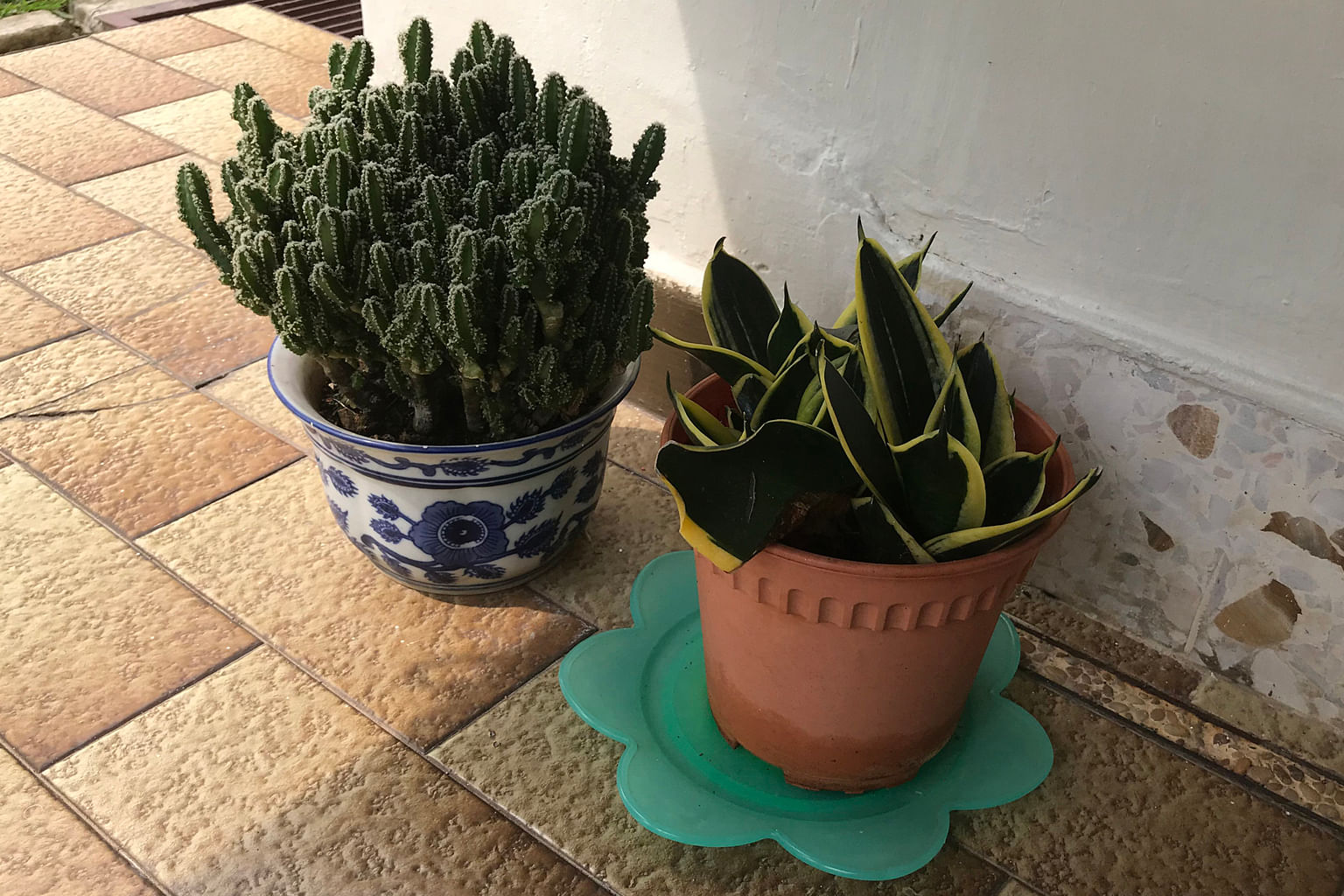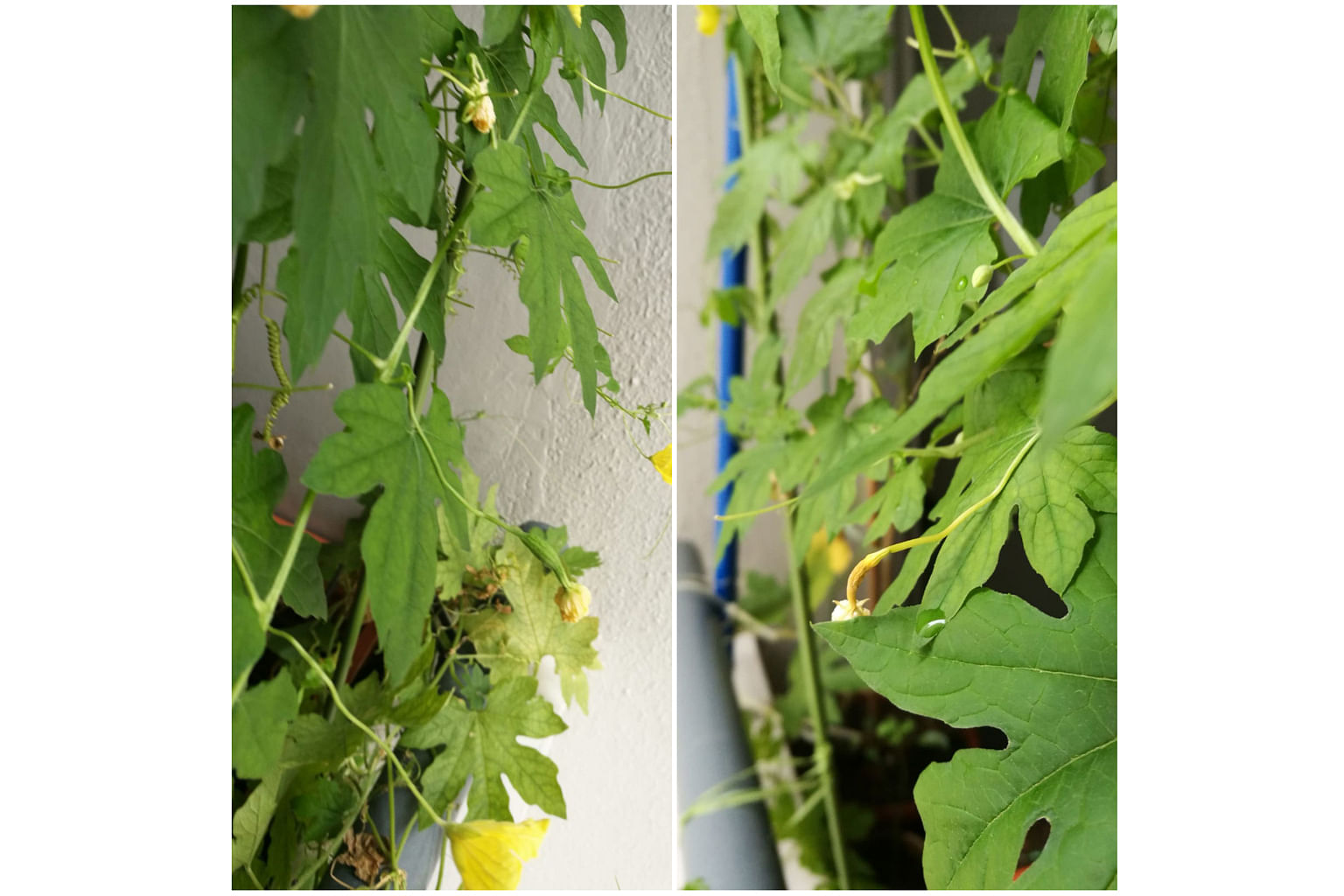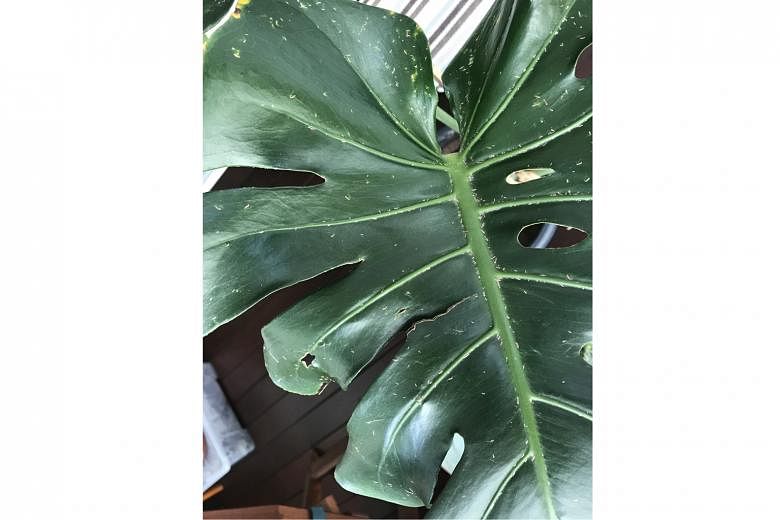Swiss cheese plant attacked by sucking pests
What are these tiny, brown spots on the plant (above) and what is the remedy for them?
George Lee
Your Swiss cheese plant (Monstera deliciosa) is infested with sucking pests that are most probably scale insects.
Use a soft toothbrush to remove them, then spray an organic pesticide solution made from summer oil or neem oil on the plant. Follow the instructions on the label on diluting the oils.
Repeated spraying every three days or so is needed to manage the pest population.
Note that these oils may be harmful to the plant, so test the spray on a small area to see if there are negative effects before using it on the whole plant.
Grow your plant in a location where it can get at least four hours of filtered sunlight daily to promote healthy growth and resist pests and diseases.
Sansevieria and cactus are slow-growing plants
My plants do not seem to grow taller. I have seen others whose pots are about the size of mine, but the plants grow at least five times bigger. My plants get both morning sun and water, but their growth seems stunted.
Sim Yeow Chuan

The plants are a cactus, most likely Cereus hildmannianus (left); and a cultivar of the Bird's Nest Sansevieria (Sansevieria trifasciata "Hahnii", above right).
Both are relatively slow-growing. In any case, they should not look "stretched".
Many novice gardeners grow their plants in overly shaded conditions and the plants end up tall and floppy due to a process called etiolation. Such plants are not to be envied as their natural forms are no longer present.
Tall floppy growth is a sign of the plants' fragility and, under such conditions, they are prone to pests and diseases.
Petawali a medicinal plant

I saw this creeper plant (above) near my Housing Board block. I was told it is a herb. What is its name?
James Tan
The vine is botanically known as Tinospora crispa and is known by common names such as Petawali, Makabuhai and Liane-quinine.
It is grown mainly as a medicinal plant.
Whorls of its stems are sometimes sold in markets and they are used to purify blood as well as treat stomachache, fever, high blood pressure, diabetes and some skin issues. It is best to proceed with caution and consult a doctor before self-medicating.
Borneo Kauri a common tree in parks and along roads

What is the name of this tree (above) and how fast will it grow? Also, what is the maximum height and width of its trunk?
Jeff Wong
The tree is likely the Borneo Kauri and its botanical name is Agathis borneensis. It is a tree with a columnar growth habit and is commonly planted in Singapore's parks and along roads.
This species is relatively slow-growing and its speed of growth depends on its management.
It is documented to be able to grow up to 50m tall. In Singapore's urban landscapes, trees average at about 20m.
Taller specimens can be seen in parks and gardens where they were planted much earlier.
Bittergourd flowers need pollination to fruit

I am growing bittergourd (above), but the "fruit" turn yellow after a couple of weeks. What is the cause of this?
Mui Huang
The failure of female flowers to develop into fruit could be due to the lack of pollination.
High-rise growing environments as well as rainy weather can reduce the number of pollinators - in this case, bees - needed to pollinate the bittergourd flowers.
To help fruit production, you may want to carry out hand-pollination. You need to find a male flower, remove its petals and rub the pollen-laden anthers against the stigma of the female flower.
A female flower can be distinguished from a male one by the presence of a miniature fruit, which is the ovary of the female flower and is found just behind the whorl of yellow petals.
During the fruiting period, protect plants from excessive rain, but avoid letting them dry out totally.
• Answers by Dr Wilson Wong, an NParks-certified practising horticulturist and park manager. He is the founder of Green Culture Singapore and an adjunct assistant professor (Food Science & Technology) at the National University of Singapore.
• Have a gardening query? E-mail it with clear, high-resolution pictures of at least 1MB, if any, and your full name to stlife@sph.com.sg
Correction note: In an earlier version of the article, the cactus was described as Cereus tetragonus. It has since been clarified that it is most likely Cereus hildmannianus.

